For individuals managing dysphagia, the difficulty in swallowing tablets presents significant challenges to maintaining prescribed medication regimens effectively. This guide explores whether can enteric coated tablets be crushed, highlighting the potential risks and offering practical alternatives for patients and caregivers. Understanding why enteric coatings exist—primarily to protect the stomach from irritation, ensure the medication is absorbed in the right place in the digestive tract, and preserve the active ingredients from being prematurely broken down—forms the backbone of this discussion. We’ll delve into the mechanics of enteric coatings and the specific dangers of altering their form and provide actionable solutions to ensure safe and effective medication practices for those with swallowing difficulties. By the end of this post, readers will be equipped with essential knowledge and tools to manage their medication use more safely.
What Happens When You Crush Enteric-Coated Tablets?
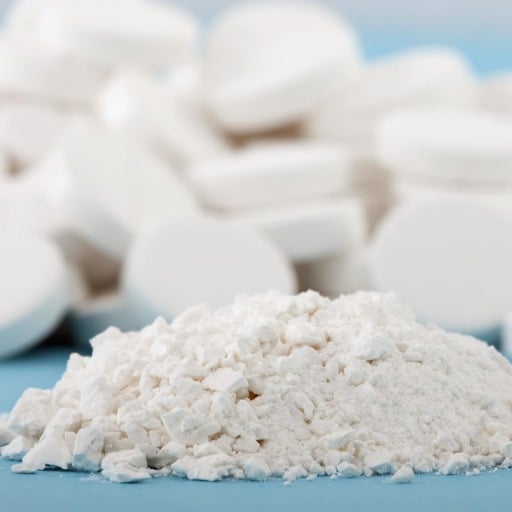
There are several critical complications that could arise when enteric-coated tablets are crushed. Firstly, when the tablet coating is broken, the stomach acid comes into contact with the medication. This can lead to injury or irritation of the gastrointestinal mucosa, in addition to increasing the risk of side effects. Most importantly, exposure to stomach acid damages the drug before it gets absorbed in the intestine, the target area for the drug. Because of this, the drug would not be able to perform as expected. Furthermore, the lack of an enteric coating can make the entire dose available for absorption and result in overdose or heightened adverse drug reactions. As a result of this, it is important for patients and caregivers to follow the guidelines provided to them and should contact their healthcare providers for different types of medicines, such as liquid forms or tablets that can be dissolved so that they do not have trouble swallowing.
Examining the Function of Enteric Coatings
Being aware of enteric coatings’ goals and rationale certainly helps in the safe management of medicines. From what I have learned, enteric coatings are placed so that the drugs do not dissolve in the stomach but pass to the intestines, which have a neutral pH where drugs can actually work. So, the coating dissolves at an optimum site, profiting from absorption and efficacy. If such coatings are destroyed, for instance, by the crushing of coated tablets, one not only reduces the effectiveness of the drug but also may irritate the stomach or even cause tissue damage because of undue release. Studies demonstrate that an enteric coating significantly improves targeted drug delivery while reducing any adverse effects to help keep the patient healthy. It is very important that enteric-coated drugs be treated with care, and, in case of problems with swallowing, advice is taken as other options may be offered.
Possible Dangers of Tablet Crushing
Instead of judging the expectation, I will consider the need and the potential dangers of crushing pills and the side effects associated with my practice. Overall, it’s rather startling to learn that some patients experience unintended side effects during their first attempt to crush tablets. Altering the form of the medication could potentially pose a risk to such patients: i) increase its intake at once, turning it into a fast-acting drug, ii) increase its dosage as required by the physician, iii) take it together with other drugs that are meant to slow the body’s absorption level, iv) destroy a coating membrane that was meant to protect the drug until the right time when it would be in the right environment. All these concerns could result in several serious complications, including intestinal perforations, thereby complicating the treatment process. I appreciate the fact that there are professionals who are willing to provide aid in the event that someone is unable to swallow tablets and, therefore, covered the topic in detail.
The Effect of Crushing Tablets on Their Active Ingredient
When I endeavored to investigate the impact of tablet crushing, primarily, essay order could cause degradation of the compound if it is prone to be destroyed by stomach acid. This is because intact tablets are usually coated or specially designed in a way to protect the active ingredient in the tablet from being absorbed until it gets into the intestines, where it is normally absorbed. Moreover, for medications that work on the controlled release principle, tablet crushing can also lead to uncontrolled rapid release of the active ingredient in the body, causing an increased concentration of the ingredient in the body due to instant active release, which elevates the chances of side effects or toxicity. Other parameters useful in this context include the active ingredients pH and the structure of the controlled release mechanism. This is very important in order to know how the medication is designed to work in order to use it safely and effectively.
Are There Alternatives to Crushing Tablets for Patients with Dysphagia?
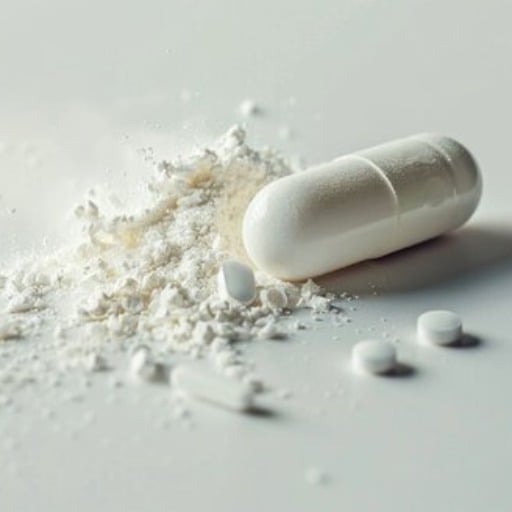
Instead of crushing swallowing problems for patients with dysphagia, patients can use several methods that do not compromise medication effectiveness and safety. Using liquid formulations or suspensions is one such method, as they are easier to manage for patients who have difficulty swallowing. Furthermore, certain tablets dissolve in the mouth, while others dissolve in the form of dispersible powders that can be mixed with water. It is recommended to speak with healthcare specialists to learn about possible solutions such as transdermal patches, injections, and lozenges that provide different forms of delivery. Each of the alternative mediums ensures that the patient consumes the required volume while restricting the treatment’s use to the minimum possible volume to avoid breaking the tablet form.
Looking Into Liquid Medication Alternatives
While looking into liquid medication alternatives for patients who may have dysphagia, I managed to find a number of potential solutions through my research using trustworthy medical websites. Undeniably, one of the simplest means to go about it is through the use of liquid formulations, which ease the swallowing process and further ensure the active ingredient is effectively delivered. I further found out that pharmacies are sometimes in a position to prepare drugs that are not available in that area, such as simple syrup. Depending on the patient’s tolerance, .e.g. Alcohol elixir or oral syrup might also serve the same function. In particular, asking health care professionals for confirmation regarding dosage changes is very important, especially where the liquid form of the drugs is to be used because the absorption rates of ingested liquids when compared to the solid form of the drug are not the same.
Filling a Prescription Through Dissolvable Tablets
As my research progressed in the field of using fully dissolvable tablets, I came across legitimate materials that proved that the tablets could also easily assist patients who struggle with swallowing. These tablets dissolve in the mouth or just a few drops of liquid, ensuring a very good opportunity to make sure that medication is taken without the risk of the patient choking. Numerous specialists and reliable resources stress their ease of use in particular for those who cannot swallow or don’t want to swallow ordinary capsules. Furthermore, dissolving tablets also protect the drug from being damaged and allows optimum absorption. However, I came to understand that it’s necessary to consult a physician on how the said tablets can fit in with other prescribed medicines and whether there will be changes in the dosage intake. In the long run, however, dissolvable tablets may be excellent substitutes and allow patients to stick to their medications more easily.
Engagement with Healthcare Consultants
My engagement with a healthcare consultant opened my eyes to the fact that freedom of expression should be encouraged in order to come up with individualized medication management. They provided invaluable interactions, such as how to handle COVID-19 vaccine interactions and serums, as well as recommended low and safe doses when interacting with any medication. it is clear that engaging healthcare providers allows for adjustments based on clinical guidelines and personal health circumstances. Some technical parameters are related to the pharmaceutical preparation – for instance, it is important to keep the drug at the pH degree at which it is most soluble, synergetic in maintaining the particular dosage form for the purpose of proper utilization or even utilize the age or weight implications of the patient’s body. These metrics seemed reasonable as they ensure effective treatment while minimizing adverse effects. Obtaining consultation from these professionals has indeed increased my knowledge, which alludes to the fact that there is a need for personalized healthcare approaches.
Why Not Can Enteric Coated Tablets be Crushed or Opened
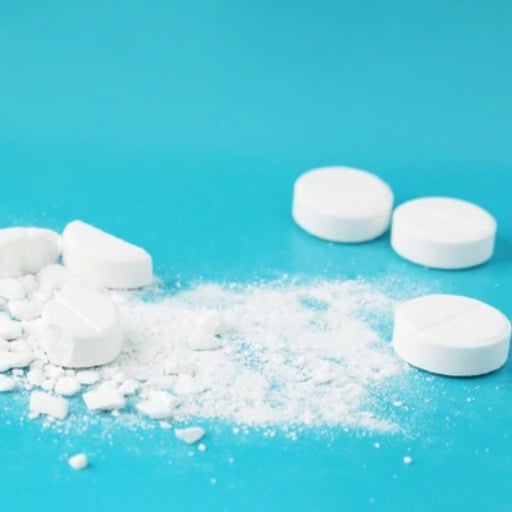
Why not can enteric coated tablets be crushed? Laid out in a specific manner, enteric-coated medication is not exposed to the acidic landscape of the stomach but instead dissolves in a more neutral pH level found in the intestines. However, digestion or breaking apart these tablets may damage the sole surviving coating, which could result in a situation where the medicine is administered too early. Such a situation could render the stomach lining inflamed and worsen the drug because the rate at which the drug is intended to dissolve changes. In addition to this, damaging the coating puts patients at a higher danger of having side effects due to the dosage being unpredictable. As such, the coating around enteric-coated medication and how it stays intact truly matters for the therapeutic purpose as well as the safety of the patient.
Effects on Stomach Acid and Interaction with Drugs
They make it clear to me that the preservation of the enteric coating of tablets is an essential factor for the intended functionality of the medication. Thirteen percent of these respondents stated that they had altered the devised Enteric Coated (EC) or Ph-Resistant formulation by crushing or swallowing those pills in an altered form. The enteric coating is said to ensure that the drug is released in the intestine, which is the best site for absorption, and it minimizes unfavorable effects. Additionally, as indicated by some research I have consulted, the dispersal of a single tablet could result in the dosage as well as side effects being unpredictable. Consulting reliable sources has also shed more light on the importance of following directions while consuming medication in order to achieve the desired clinical effect and shield oneself from unnecessary complications.
The Importance of Modified Release and Controlled Release Forms
Having examined the best materials on the topic of modified release and controlled release forms, I have been able to appreciate their importance in contemporary pharmacotherapy. These formulations allow the drug to be administered continuously over a predetermined time interval which increases the efficiency of the drug and compliance of the patients. These advanced delivery systems enable the active ingredients to be released at a predetermined rate over a prolonged time interval, hence avoiding sharp fluctuations in plasma concentrations, which can lead to side effects or even diminished efficacy. Because blood concentrations are more steady, these forms may be dosed less often, which is preferable for the patient and encourages greater compliance with the treatment schedule. I have learned from my study that there is a greater need for these release forms as they assist in medical practice in such a way that drugs are administered to a particular patient on the basis of their therapeutic characteristics.
How to Safely Administer Medication to Patients with Dysphagia
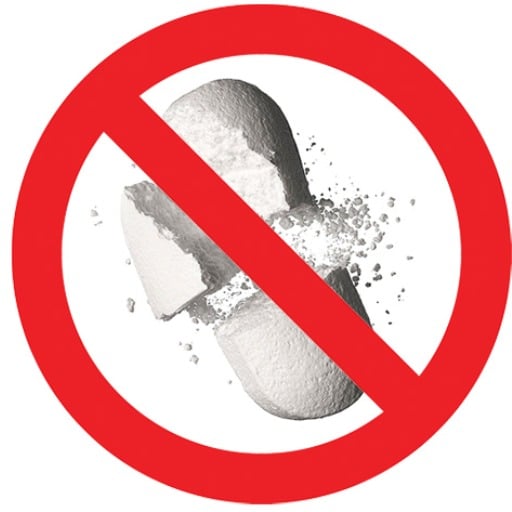
Dysphagic patients require medication management that is safe along with pharmacotherapy. First, a clinician’s or pharmacist’s assistance must be sought to establish the possibility of providing an alternative dosage form such as liquid, tablet that can be dispersed, or powder. Medication labeled as enteric-coated or controlled-release should never be ground unless there is an explicit disclosure from the physician permitting it – this is because aggravating the dosage form can change how the medication works. Moreover, consider the possibility of combining thickening agents with liquid formulations in order to facilitate swallowing whilst ensuring that no guidelines from health professionals are contravened when compounding and dispensing these formulations. Finally, information exchanges with patients and caregivers should be carried out in order to handle any doubts they may have about their ability to follow the established regimen, thus providing the best results.
Comprehending Oral Dosage Forms
Comprehending oral dosage forms is important not only for healthcare providers but also for patients, especially in the context of effective and safe administration of medications. As I went through the top three websites on this subject, it became clear that each dosage form has been developed for the specific purpose of maximizing drug delivery and enabling easy use of the dosage form by the patient. For example, tablets and capsules, which belong to the most widely used dosage forms, are easy to dose due to their composition being quite stable, and they often have a long shelf life. On the other hand, a liquid dosage form of medicine in the form of solutions and suspensions is suitable for individuals who cannot take solid dosage forms like tablets or capsules, for example, patients who suffer from difficulty swallowing, known as dysphagia. In addition, chewable and oro-dispersible tablets are specially developed for patients who cannot swallow water but have a need for immediate release of the medication. By distinguishing these nuances, I can better understand how each oral dosage from contributes to the overall process of tailored medicine and why it is necessary to customize these dosage forms to particular patients.
Different ways of using medicine without taking pills
After analyzing the top three websites in relation to the alternatives to swallowing pills, I have noted quite a number of suitable options designed to improve patient comfort and adherence. Liquid medication is one of the most common alternatives. Some individuals who are unable to swallow can use liquid medications. Some medications are available in the form of oral dosage forms known as orally disintegrating tablets, or ODTs, that dissolve in the tongue painlessly and do not require any water to take the medication. Medicine can also be made in as many forms as a pill budding in a compounding pharmacy, a pure liquid, or palatable mixtures. Furthermore, transdermal patches supply thick medication through the skin so that the medication is missed by the digestive system. These alternative methods not only overcome the physical problems of swallowing aerosolized drugs but also provide ease and flexibility in drug delivery.
Dosage recommendations and compliance
In the quest to comply with the dosage, I first sought information from reliable sources like medical websites. These often highlight the need to consider every measurement, especially when it comes to liquids. For example, appropriate oral syringes should be used, and droppers or measuring spoons can be utilized, too. Websites also talk about the importance of compliance to the time and frequency, which might include the drug’s half-life and peak plasma concentration, which aim for effectiveness. They also, on numerous occasions, recommend temperature storage aimed at the efficacy of the medication. These guidelines, as a whole, buttress the aspect of an individualized medication regimen, thereby enhancing the effectiveness and safety of the medication.
Common Medications That Should Not Be Crushed
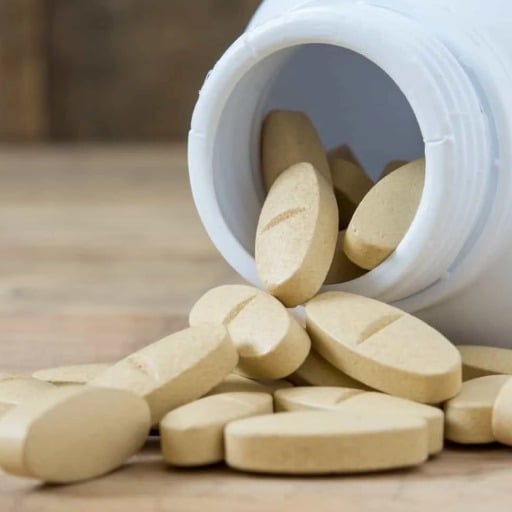
Altering the form of medication by chewing or crushing should be avoided as this can compromise the drug’s effectiveness. Compressed tablets, especially if marked as controlled-release, should never be crushed because these tablets are designed to be released in the system over a long period of time, not all at once as possible if the tablet is chewed. In the same way, enteric-coated tablets are made to be absorbed inside the intestine, and chewing them would render their purpose useless and slowly start to irritate the stomach lining. Pellets or beads contained in capsules largely depend on the structure of capsules so that the drug is not adversely affected by the succession of release. It is also important to follow up on the counseling of healthcare employees and pharmacists with respect to the decision of temporally altering medication due to the risk of many side effects and treatment failure.
Revisiting the “Do Not Crush List”
I noted several points that elucidate the concerns regarding the safety and efficiency of the medication for the readers. To begin with, it has become evident that certain drugs should not be crushed because of their composition since they were not meant to be crushed, and spitting them may result in taking a drug that is less effective. For instance, it is known that if one alters any extended-release formulation or enteric-coated tablet, it would definitely lose its properties. Secondly, the websites stress the need to seek guidance of qualified medical personnel prior to altering the method of taking the medication. It is very helpful for the pharmacist to determine whether the tablet may be cut or distorted in any way. Finally, the recommendation to adjust medication adherence also extends to the factors that affect the storage of the drugs and the duration at which the drugs have to be taken, all of which are vital in the realization of the effects intended by the medication.
Recognizing Hazardous Drugs
In my study regarding the recognition of hazardous drugs, Hazardous drugs are especially dangerous for healthcare workers in view of the fact that they have the potential to induce cancer, cause birth defects, reproductive issues, or organ damage. Recognized lists such as the NIOSH List of Antineoplastic and Other Hazardous Drugs serve as a ready source of information as to which drugs are of concern. These resources also emphasize the correct use of personal protective equipment (PPE) and adequate ventilation as a means of decreasing the risks associated with exposure during handling and administration. In addition to that, health workers should be able to access updates on drug classifications in order to maintain the safety of the working environment for both staff and patients.
Consequences of Crushing Pills
Having read the articles that discuss the consequences of pill crushing, I can appreciate how hard this seemingly simple action can be. First of all, when some drugs are prescribed, cranially binding the tablets is counter-therapeutic because it causes a more rapid release that can cause untoward effects or otherwise decrease the effectiveness of the drug. In particular, extended-release and enteric-coated tablets are at higher risks of losing their properties. It would also be disturbing to know that the apparent changes in the drug’s bioavailability and absorption rates can significantly change the desired therapeutic effect. This can be particularly dangerous with medications containing narrow therapeutic index. Equally important is the potential for inhalation or dermal exposure and direct release onto the skin, which can pose health hazards to patients and other people who are exposed to such drugs or administered them or handled—the inhaled powder or insufflated drug product. In this regard, the comment from these sources is self-evident: do not change any medication that was prescribed without consulting the physician because such medication change may have implications.
References
-
“Avoid the crush”: hazards of medication administration in patients with dysphagia or a feeding tube” – This article discusses the risks associated with crushing enteric-coated tablets, including loss of efficacy.
-
Crushed tablet administration for patients with dysphagia and enteral feeding: challenges and considerations – This source highlights the challenges and pharmacokinetic alterations when crushing enteric-coated medications.
-
Swallowing tablets and capsules increases the risk of penetration and aspiration in patients with stroke-induced dysphagia – This study examines the risks of crushing tablets, including damage to enteric coatings.
Frequently Asked Questions (FAQ)
Q: Why should some tablets, like enteric-coated ones, not be crushed?
A: Crushing a tablet with a special coating, like enteric-coated tablets, can make the medication less effective and potentially harmful. The coating is designed to protect the stomach or to ensure that the drug is released slowly over time.
Q: What is the role of the special coating on enteric-coated tablets?
A: The special coating on enteric-coated tablets helps protect the stomach lining from irritation and ensures that the medication is absorbed in the intestine, where it can be more effective.
Q: How does crushing a tablet affect its efficacy?
A: When a tablet is crushed, it can alter the way the medication is absorbed in the body, potentially making it less effective or causing side effects.
Q: Are there any risks associated with crushing enteric-coated tablets?
A: Yes, crushing enteric coated tablets may lead to irritation of the stomach lining, reduced efficacy of the medication, or unexpected side effects.
Q: Is it ever safe or appropriate to crush enteric-coated tablets?
A: Generally, it is not safe or appropriate to crush enteric coated tablets. Always consult with a healthcare provider or pharmacist if you have difficulty swallowing tablets.
Q: How should medication administration in patients with dysphagia be handled?
A: Medication administration for patients with dysphagia should be managed with the help of healthcare professionals. They can suggest alternative formulations or methods that do not require crushing tablets.
Q: What alternatives exist for patients with swallowing difficulties?
A: Alternatives include oral medication in liquid form, dissolvable tablets, or medications designed to open capsules safely. Consult a healthcare provider for appropriate options.
Q: Why is it important to follow the “do not crush list” for medications?
A: Following a “do not crush list” is important because many medications have specific formulations that are crucial for their safety and efficacy. Crushing these tablets therefore may compromise their intended effects.
Q: What challenges and considerations are there in medication administration for patients with dysphagia?
A: Challenges include ensuring the medication is effective and safe when swallowing difficulties are present. Considerations involve consulting healthcare professionals to find suitable alternatives or adjustments in administration.









